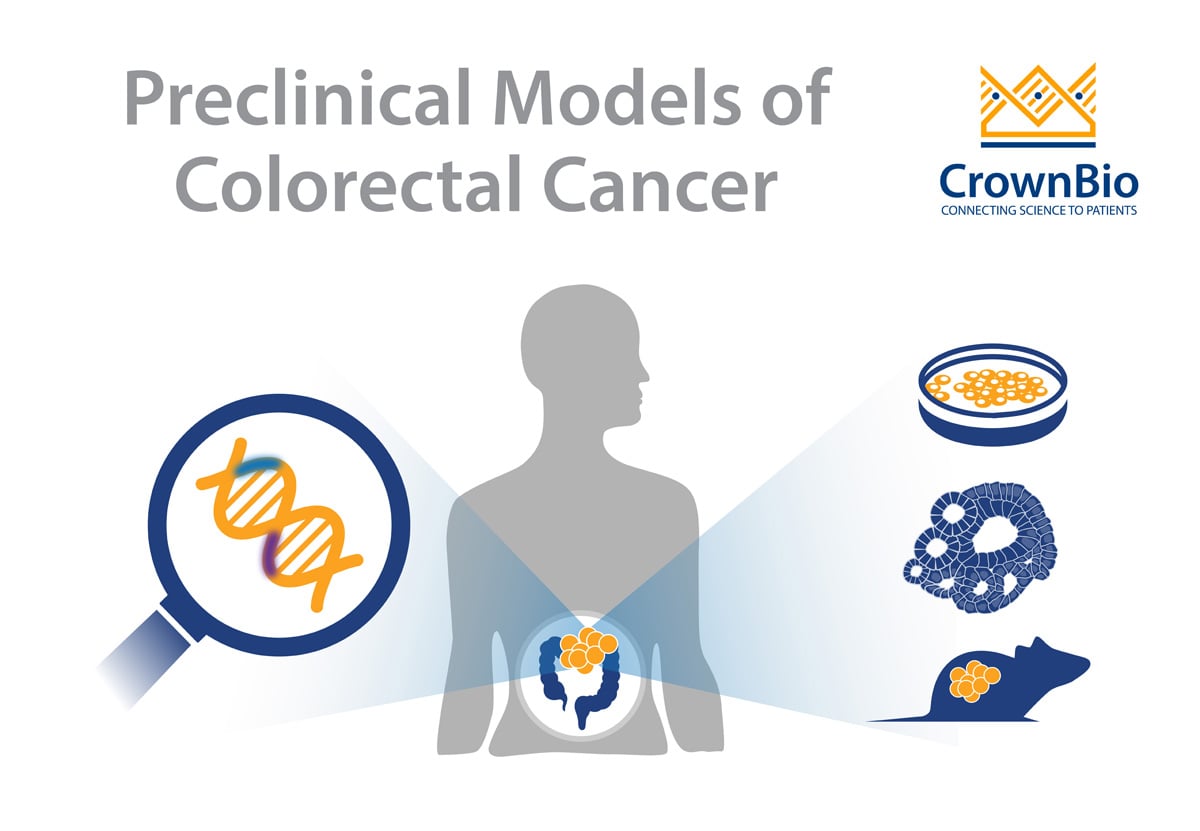Modeling Oncogenic RAS and BRAF Mutations Using Colorectal Cancer Organoids

 Explore how genetically engineered patient-derived tumor organoids are helping to model colorectal cancer and specific disease mutations in the preclinical setting.
Explore how genetically engineered patient-derived tumor organoids are helping to model colorectal cancer and specific disease mutations in the preclinical setting.
RAS and BRAF Mutations in Colorectal Cancer
Mutations in the RAS and BRAF oncogenes frequently occur in colorectal cancer (CRC) and are implicated in clinical resistance to therapy. Recently evidence shows that different mutant variants of these genes have different oncogenic potentials and therapeutic outcomes.
RAS Mutations in Colorectal Cancer
The Ras family of small GTPases includes the proto-oncogenic isoforms HRAS, NRAS, and KRAS (which can be alternatively spliced to KRAS 4A and KRAS 4B). All three have mutations implicated in various cancers, with mutation in KRAS being the most prevalent.
KRAS mutations are also the most predominant RAS mutation in colorectal cancers with a prevalence of about 35-50%. Mutations in NRAS have only been identified in less than 12% of investigated cases.
Mutations in KRAS and NRAS are associated with resistance to epidermal growth factor receptor (EGFR) inhibitors. Epidemiological studies suggest that there may be significant differences in the resistance to anti-EGFR therapy among the various specific mutations found in KRAS and NRAS. However, getting enough sequence-specific clinical samples has precluded confirmation of this correlation.
BRAF Mutations in Colorectal Cancer
BRAF is a serine/threonine-specific protein kinase activated by binding to active RAS molecules. Mutations that result in constitutively active BRAF are termed activating mutations. The majority of BRAF activating mutations affect codon 600 (i.e. V600E) and function by releasing the enzyme from its autoinhibitory confirmation, thereby enhancing enzyme activity.
BRAF activating mutations are found in around 10% of all CRCs. BRAF gene fusions that lead to increased enzymatic activity have also been detected in patients with CRC. These types of activating mutations in BRAF (e.g. V600E and BRAF fusions) tend to occur in a mutually exclusive manner with mutations in KRAS and NRAS in CRC. BRAF V600E is also associated with anti-EGFR therapy resistance in CRC patients.
The Relationship between KRAS and BRAF Mutations in Colorectal Cancer
While oncogenic KRAS and BRAF mutations have been implicated in classical CRC adenomacarcinoma tumor progression, the roles of the two genes are suggested to be mostly mutually exclusive. Experimental evidence is accumulating indicating that both oncogenes drive distinct pathways towards CRC tumorigenesis. For example, while KRASG12D mutations are often found in classical APC-deficient adenomas, BRAFV600E mutations are more likely to occur in sessile serrated adenomas.
Challenges in Preclinically Modeling Colorectal Cancer Mutations
There are multiple challenges in the clinical and preclinical investigation of CRC mutations and their roles and relationships. For example, metastatic CRC (mCRC) patient sample sizes that contain specific mutational variants of RAS and BRAF are small. This dearth of available patients has blocked the initiation of clinical trials investigating mutation-specific therapies, despite the experimental evidence suggesting an advantage to this strategy.
The development of clinically-relevant mutation-specific preclinical models would be highly useful. This would allow further elucidation of the oncogenic potential of various mutations of the two oncogenes, and, importantly, also serve as a platform to investigate mutational-specific therapies. This would further harness the potential of personalized therapy.
Patient-derived xenografts (PDX) models are clinically-relevant preclinical models widely employed as a strategy to address these issues. However, PDXs are mostly an in vivo model and experiments employing them for these purposes are relatively slow and low-throughput. There are also instances where PDXs suffer from mouse-specific clonal dynamics. In addition, it’s difficult to genetically manipulate PDX tumors to supplement missing mutational variants in a study.
CRC cell lines have been used as an alternative since they are amenable to genetic manipulation and high throughput drug screening. However, cell lines do not capture the entire range of CRC tumor types as tissue culture tends to lead to a bias towards cells from advanced cancer stages that lack apical-basal polarity.
Using Tumor Organoids for CRC Modeling
A new option for preclinical CRC mutation modeling are tumor organoids. 3D tumor organoids have recently emerged as a physiologically relevant in vitro cancer model that are an intermediate platform between cell lines and PDX models for precision medicine. Organoid cultures maintain the different cell types, similar higher-order structures, and recapitulation of various stages of CRC found in PDX models, while being more amenable to genetic manipulation and high-throughput screening.
Proof-of-concept drug screening in tumor organoids has demonstrated their feasibility for investigating the molecular mechanisms involved in drug sensitivity and resistance seen in cancer patients. In vitro drug responses in various organoid models have shown high concordance with in vivo drug response seen for xenografted organoids.
Clinical trials involving tumor organoids have also shown a high degree of predictive value for tumor organoids, by correlating patient clinical drug response to the drug response of the corresponding patient tumor organoid. Biobanks of patient-derived CRC organoids have been established representing the diversity of the various subtypes of the disease.
Engineering Colorectal Cancer Tumor Organoids
Tumor organoids can be engineered for CRC modeling using recent advances in genetic manipulation, such as the CRISPR/Cas9 technology. By utilizing sequential knock-in and knock-out strategies in healthy human organoids, the role of various oncogenes in tumorigenesis can be elucidated.
Isogenic tumor organoids have been established to study the effects of various KRAS and BRAF mutants on targeted inhibition of the EGFR pathway. One study showed a high degree of anti-EGFR therapy resistance in CRC organoids with activating mutations in KRAS, and BRAFV600E and NRASQ61K mutant organoids were also highly resistant to EGFR inhibition. These observations are in line with clinical results. Drug screening of CRC organoid biobanks can also be used to look at drug combination screening to target specific RAS mutations.
One limitation of organoid models is that the system comprises only epithelial structures, and therefore lacks blood vessels, stromal cells, and immune cells. This means that certain CRC subtypes that are characterized by stromal invasion (such as consensus molecular subtype 4 (CMS4)) are missing from CRC biobanks. The lack of stroma also means that the crosstalk between CRC cells and the TME, which is known to affect tumor progression and drug response, is absent in organoid cultures. This also means that therapies targeting the stroma cannot be tested in CRC organoids.
Conclusion
The establishment of organoids from various CRC subtypes, along with their amenability to genetic manipulation and scalability in vitro, allows for their use as a model to investigate the effects of various oncogenic mutations on colorectal cancer tumorigenesis and drug response. The physiological relevance and high predictivity of the organoid system, means that they provide a useful preclinical model system for looking at these oncogenic mutations (which was previously lacking).
Cite this Article
Campbell, D., (2020) Modeling Oncogenic RAS and BRAF Mutations Using Colorectal Cancer Organoids - Crown Bioscience. https://blog.crownbio.com/modeling-oncogenic-ras-and-braf-mutations-using-colorectal-cancer-organoids



